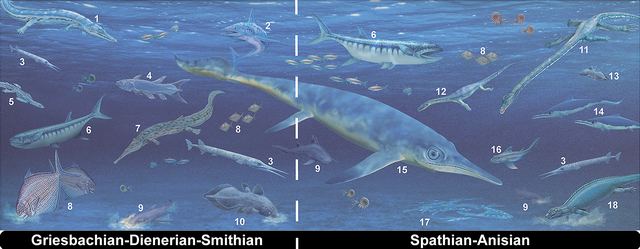Top Qs
Timeline
Chat
Perspective
Fadenia
Extinct genus of cartilaginous fishes From Wikipedia, the free encyclopedia
Remove ads
Fadenia is an extinct genus of eugeneodontid holocephalian chondrichthyan from the Carboniferous Period of Missouri (United States), the Permian period of Greenland, and the Early Triassic epoch of British Columbia, Canada (Sulphur Mountain Formation).[1][2]
Remove ads
Discovery and naming

The first fossils of Fadenia were discovered and described in the periodical Meddelelser om Grønland in 1932 by the Danish vertebrate palaeontologist Eigil Nielsen after studying the Upper Permian beds of Cape Stosch, in the fjord of Godthab Gulf in King Christian X Land, East Greenland. Nielsen had joined at the beginning of the Three-year Expedition to East Greenland led by Danish geologist and explorer Lauge Koch. The manager of the expedition was the botanist Gunnar Seidenfaden, after whose surname the genus was named.[4][5]
Remove ads
Classification
Fadenia belongs to Eugeneodontida, an extinct order of Chondrichthyes that are characterized by the presence of tooth whorls. Fadenia is one of the few eugeneodont genera that survived the end-Permian mass extinction event, and it was one of the latest-surviving members of this clade. It could reach about 1.5 metres (4.9 ft) in length.[1][3]
References
Further reading
Wikiwand - on
Seamless Wikipedia browsing. On steroids.
Remove ads

